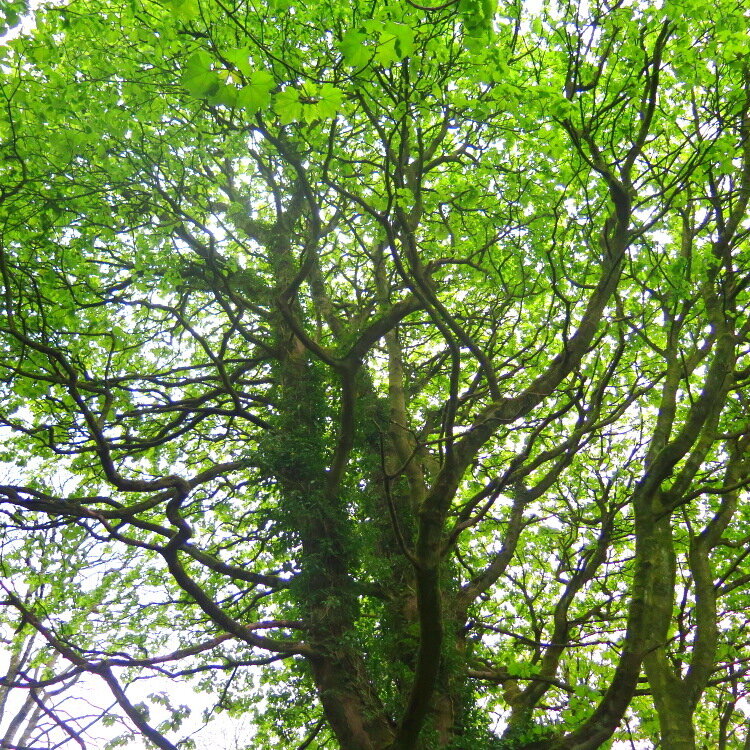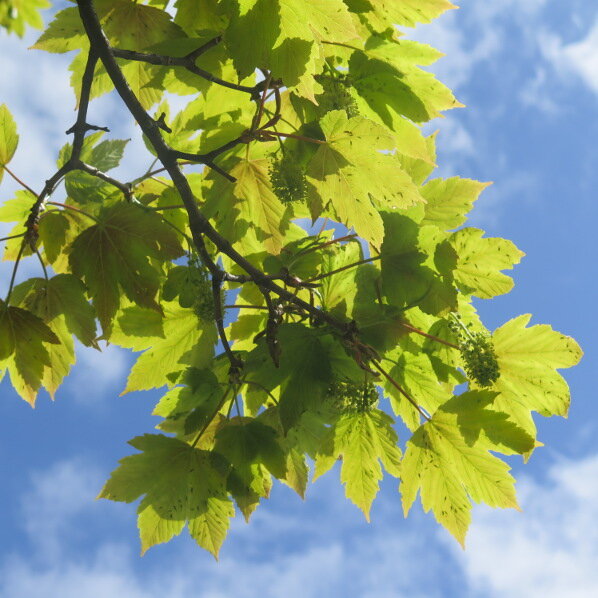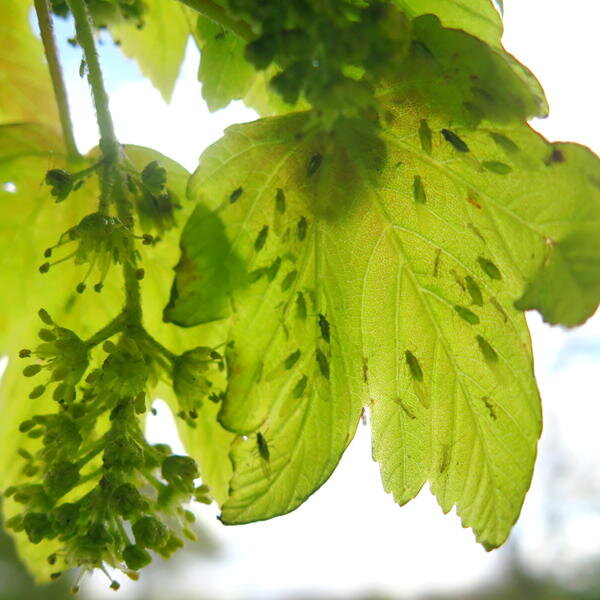How the Sycamore came to be (a tale to tell under a tree)
The Sycamore tree may be a newcomer to our shores but it still has many fine attributes. How the Sycamore Came to Be weaves ecology and science with magic and myth. Perfect for inspiring further exploring of this common tree.
Telling stories outside is akin to eating outside: it’s always better! Especially if you select a story that links with the place, the season or the wildlife around you.
How many stories can you remember? I suspect its more than you think. We hear stories everyday: in books, on TV, on the radio, on the internet. We tell stories everyday either to our children, our friends or to ourselves. Stories help us understand the world around us. Momentarily we can get lost in a story, distracted by the words, escaping into the combination of you and the storyteller's imaginations. We have evolved with stories: they reinforce our identities, guide us and teach us.
Which is why, at UnderSky the activities in our events and products are story-led. We introduce the marvels and science of the natural world through stories and play. “In a woodland not far from here.... The King of the elves needs your help.... Congratulations you've been invited to...”
The wonderfully open minds of children delve into our stories and take them with them long after the games are finished. Our stories seed their imaginations. Combining stories and play is the best way to learn, develop and have fun.
Here’s a story we wrote for you to share with your little ones. It combines the ecology of the Sycamore with some magic to form a myth to help you think about this common tree in a new light. Ideally read this story under the boughs of a Sycamore tree (help to identify a Sycamore tree here) and there's some ideas at the end for exploring the tree a little further.
How the Sycamore Came to Be (a tale to tell under a tree)
A long time ago, 1000 days walk from here, lived a little girl. She would talk of the worlds she longed to know and what she wished to do. But only dreams gave her the eyes to see new scenes. She would stand on the edge of her homeland and gaze into the haze of the horizon. “I wish I could travel far and wide, beyond where the sea meets the sky” she thought wistfully.
The little girl wasn’t little for long. She grew up tall and strong. But she was shy and tried to hide from everyone. She climbed trees instead, leapt over streams and hid unseen in the woods where the wildlife were her only friends.
On this day the girl was enjoying her usual play: barefoot, lightfooted across the fields and through the woods. She understood the bird calls as they searched for food in the leaves above and the leaves underfoot. Each bird hopping and hoping to find a feast in the trees.
“I wish I could bring a dish for their dinner, make it easy for the birds to feed their family” Thought the girl gazing up at the leafy canopy as stars of sunlight bounced with the birds in flight.
Suddenly, “Help!” One word cut through the green, filled with tension and possibility. With toes hardly touching the ground, the girl flew to the scene. And there in the river was a boy. He had balanced across rocks to the middle but now struggled to return. He was younger, less nimble and thought wet feet weren’t fun. Being tall the girl could stretch her arms far: useful for both climbing trees and emergencies! Their hands met and the boy leapt to safety. But after a quick “Thank you” he’d turned and ran away.
“I wish I had someone to play with, who’d happily spend the day barefoot” the girl made this third wish and although alone in the woods she was not unheard.
The woodland shivered, the trees stirred. All this time the girl had been watched. Her wish to travel, her wish to be kind to the birds and her wish to play had all been heard and were now being considered. The girl shivered, the trees stirred. “She’s the missing piece! Our woodland is complete!” The trees were considering how the girl would fit in to their woodland web of life.
This is when the magic happened: her wishes came true.
She grew taller and stronger, her feet reaching deep into the soil, anchoring her steady. Her arms stretched higher supporting bird nests and a squirrel drey. Many leaves the shapes of hands unfurled giving food to aphids which in turn were food for the birds. Her pony tail became yellow flowers full of sweet nectar for bees. And soon some children found her branches to be perfect for climbing and playing. She had brought many dishes to the feast. She had found someone to play with.
The tree smiled.
All summer the woodland creatures found sanctuary in the tree. And all summer the children played in the tree. With Autumn came preparations for the Winter sleep: slowing down, leaves fall to the ground. Defiantly our tree wished not to sleep but to seek new shores. It was at last time to explore. Her flowers transformed into flying machines which could spin up with the wind. Her feet on the ground while her seeds were travelling. Beyond where the sea meets the sky, they helicoptered high.
The sycamore tree has travelled far and wide landing in Britain 500 years ago. The chances are, it’s a tree you’ll know.
Have you seen the majesty of this tree?
Have you seen how they grow on both the hill and by the sea?
Have you watched how birds and insects feed?
Have you played in their branches or spun their seeds?
Notes on the story:
The Sycamore tree has suffered some bad press in conservation circles. They are classified as non-native trees in Britain and were brought here about 500 years ago from central Europe. Being non-native means that the number of different creatures it supports is lower than some of our native trees. However they still have important ecological functions.
If you search your local parks and woodland in Spring look at the underside of the Sycamore leaves and you’ll find the Common Sycamore Aphid (Drepanosiphum platanoidis). Spaced perfectly apart on the leaf, determined by the length of their antennae so that they can pass on information to each other, there can be over 2 million aphids per tree. Only living on Sycamores, these aphids are a vital part of the food chain providing food for ladybirds, hoverfly larvae and many birds as they grow their family.
Sycamore trees are salt tolerant and can grow in quite inhospitable places – with low nutrients in the soil, by the coast and high in the hills. The bark has been compared to that of Elm and provides the perfect substrate for 170 different lichens, some of which are rare. And as the branches and trunk of a dead sycamore decompose, it is home to various beetles and other insects.
Over thousands of years we have transformed the landscape of Britain, often to the detriment of all other living things. As an anthropogenic addition, it has taken a while for sycamores to make friends. But research has shown that they provide an important role in our parks, gardens, woodlands, coastline and uplands.
Leslie A.D. (2005) The ecology and biodiversity value of sycamore
Ideas to Explore:
Look at the shape of the Sycamore leaf - it has 5 points like 5 fingers. Can you find a leaf the same size as your hand?
In May look underneath the leaves - can you spot any aphids? How many are on one leaf?
In Spring you can also find the flowers like a mini golden cascade - can you spot any pollinators enjoying the nectar and pollen?
In Autumn search out the Sycamore seeds - snap the pairs in half, throw in the air and watch them twirl. Choose a spot nearby and see who can get their seeds to land in it.
In the Winter look closely at the bark of a Sycamore tree - there are many patterns, shapes and colours. The flaking plates of older trees are a refuge for many invertebrates. Can you see any lichens living on the trunk or branches?






